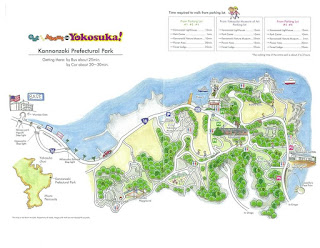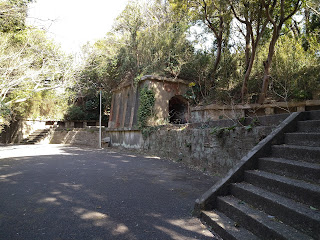For spring break this year we decided to travel to Kyoto and Hiroshima. Kyoto has long been on our bucket list. As the capital of Imperial Japan for over a thousand years it has hundreds of historic things to see and do. Unlike many other big cities, Kyoto was largely spared bombing in World War II. Hiroshima was also on the bucket list for its historical significance but also for the island of Miyajima - with its shrines and beautiful trails.
At first I was going to do this as a single blog post but as I wrote it, I realized there is too much to say about each day and so I will serialize it.
Accepting slow travel
With a 7, 5 and 2-year old our travel has much different considerations than it did at other times in our lives. It’s a version of “slow travel”. It’s required a change of mindset from how I travel solo or even how I’ve traveled with just Alita.
 |
| It takes a little longer to get there, but at least they’re cute. Most of the time. |
Our travel at this life stage requires a mindset of abundance. We will not get to see all of the pins that I’ve put in our Google Map. You have to accept what you are able to get to see and travel as if you will be back to see the things you just don’t have time for this time. On this trip we did not make it to several of the “big” Kyoto sites on almost any list of top 10 things you must do in Kyoto - the Golden Pavilion, the Silver Pavilion, the philosopher’s walk, etc (to name a few of my top ones). I quickly realized that if we tried to get to all of these things we would run ourselves ragged.
 |
| Everyone wants to hold daddy’s hand |
We often miss these things that any 20-something backpacker would make the energy for because our kids love a playground more than a 1,000-year-old-temple at this point. The time that we could have spent hurrying them along to see these once-in-a-lifetime spots they would just as soon spend on the slides, swings and sandboxes.
 |
| 5-story pagoda vs. the playground. Playground wins. |
I won’t lie, this takes some conscious effort on my part. But we have also come to realize that it takes practice. We’ve done several one and two-night weekend trips and these really helped refine our travel strategy and understand what is realistic for our family at this stage.
Travel takes longer and requires an acceptance of the speed at which our kids move. Whatever time Google Maps thinks it will take you to walk somewhere we needed to add about 50%. Sometimes more.
Logistics
Travel
Travel options
 |
| Trygve helpfully pointing out the Shinkansen |
We considered the shinkansen, rental car (from the base) and our POV. I suppose you could fly but we did not seriously look into this option.
| Option | Advantages | Challenges / Costs |
|---|---|---|
| Shinkansen |
|
|
| Base rental car |
|
|
| Our car |
|
|
I did a little cost comparison of the options (minus flying). We ended up paying $1,192 for shinkansen tickets for four sets for three legs (Yokohama to Kyoto, Kyoto to Hiroshima, Hiroshima to Yokohama) plus the costs of the trains to get from our house to Yokohama. By comparison the driving options were around $760 for our car or $900 for a rental. So the shinkansen is about an extra $300 - $400 for this trip.
Some of my main assumptions were:
- $55/day rental cost
- ¥152/L gas cost
- Tolls estimated using this site
- $20 / day parking costs
- 9 day trip
- Did not consider in-and-around costs for trains since we would probably try to take these when we could regardless of how we did our major destination travel
- Times are total times for Our house in Yokosuka > Yokohama > Kyoto > Hiroshima > Yokohama > back to our house
However, the shinkansen saved at least 10.5 hours of travel. That’s almost another day of vacation for that $400. And the 10 hours of travel on the train is still a lot less stress than an equivalent time of driving. Finally, the 20.5 hours of driving that Google forecasted is the best case scenario and does not account for rush hours, accidents or construction. So for us and this particular trip, the shinkansen was the clear choice.
Shinkansen
In addition to the hard cost and time comparison, the shinkansen had been on our Japan bucket list for a while. There’s just something cool about rocketing through the country at 200 mph past Mount Fuji.
 |
| Mandatory shot of traveling past Fuji from the Shinkansen |
There are several apps that you can use to buy your tickets. We used the SmartEX app. It was relatively easy to search options, buy, and (if necessary) change tickets. Google Maps has the Shinkansen routes so you can also do a lot of your initial logistics explorations there.
Outside of COVID times you can get two rows of sets on one side of the train and turn one around. We tried this on the first leg of our journey and it was wonderful until one of the employees told us that all seats had to be facing the same way due to COVID concerns - even if we were all in the same family.
 |
| Ride so smooth you can do origami |
As I noted in the table the shinkansen is on time, indeed it is a matter of national pride. It almost feels discordant from US trains or especially air travel in that the shinkansen is just like a normal train in that it pulls up to the station, you have about 60 seconds to get on, and then the train leaves the station. There’s no fanfare and you had better not miss getting on. Or off.
We got reserved seats since we wanted to make sure we could have our family together. You can get unreserved seats which are a little cheaper. I think the earliest trains in the day are also a little cheaper.
Lodging
We considered looking at a western style hotel but we opted for Airbnb. In these COVID times we felt that having the whole house to ourselves was probably safer for us and everyone (our kids touch everything and at least one still puts a lot of it in his mouth). But with an Airbnb we could usually get two bedrooms. Most traditional Japanese inns have a single tatami room. While this is a great experience for longer travel it was nice to be able to put the kids to bed in their own space and relax with a bottle of wine or sake.
 |
| Kid’s tatami sleeping room |
It’s also really nice to have our own kitchen space. We generally do breakfast in our room and make sandwiches for lunch. We love trying local food but with our kids getting them into one restaurant a day is all we can handle.
 |
| Ah, a kitchen and table. This is the travel life. |
It’s easier to do laundry in Airbnbs since you don’t have to leave the house. On these week-long trips we found ourselves doing laundry about every other day - although that’s mostly because our young boys get things dirty fast.
Finally, we were able to choose Airbnbs with nice big entryways. It’s nice to have a little space for everyone to get their shoes off.
 |
| We really appreciated a space to take off shoes and unload when we came back at the end of a day |
Drinks
One of my favorite parts about traveling in Japan is that it seems to be a law that at no point should you ever be more than a half-kilometer from a drink machine. Even when you in some remote mountain temple or trail you can come around a bend and find a Dydo, Kirin, Coffee Boss or some other drink machine. I am somewhat fascinated by the logistical system that keeps these supplied.
Packing
For packing we went for one bag per adult and two bags for the kids. This made it pretty easy to quickly board the shinkansen and the other trains, subways and buses that got us to and from our destinations.
 |
| Three roller bags, three backpacks |
One thing we realized is that you need fast drying clothes. In other words, things like jeans are a bad idea. This is because most Japanese houses do not have driers. Most Japanese hang their clothes out to dry either in the bathrooms (the newer ones have heaters, but most have fans for drawing air through) or outside. Given that we often we doing just-in-time laundry we really needed what we washed at night to be dry by the next morning and that becomes of a challenge as we were getting into the humid summers.
Other items that we’ve found nice for our family at this stage is one or two night lights so that the kids can find the bathroom at night in an unfamiliar space. It was nice to bring out computer so that we could let the kids watch some TV when we needed to do some planning without them crawling all over us.
We did pack some peanut butter and jelly since these were harder to find at the convenience stores. But we bought milk, cereal and bread from the nearby convenience store. In Japan you are never more than a half-kilometer from one.
We’ve started using packing cubes to keep the kids clothes together and this was really nice to keeping the clothes from exploding all over their room over the course of the week.
Costs
Altogether the trip was $3,560. I like to break out the major travel to our destination from the per day expenses since the train, plane or car ride costs to the destination do not scale with the number of days that you stay in a place. Per day it cost about $277 with the largest per day expenses being lodging and food. This per day cost is also for the entire family. For a single adult it was probably close to $180 per day.



















































